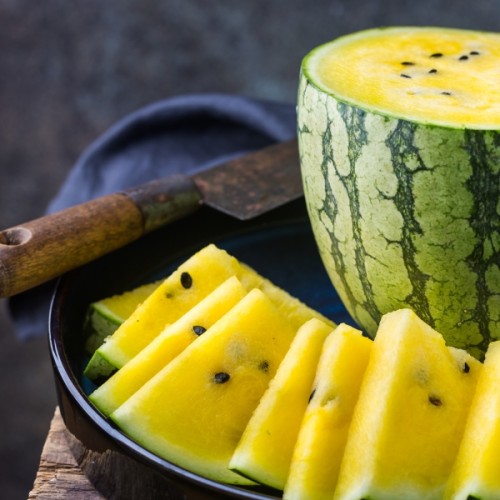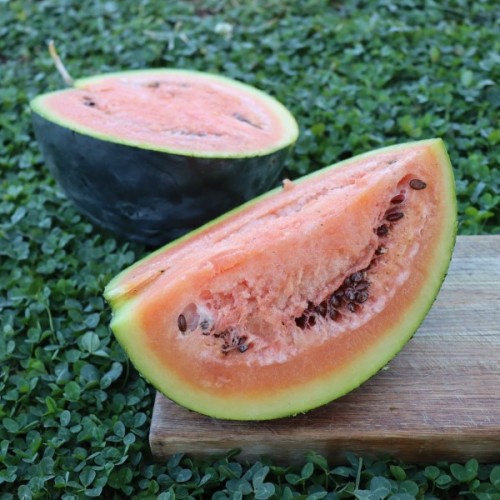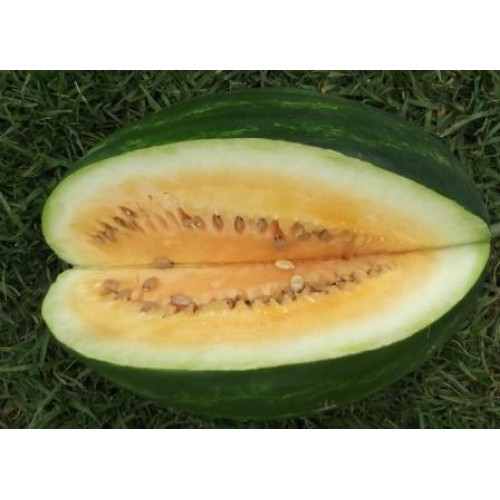Watermelons
What is summer without a watermelon – or five! Summer’s ultimate fruit crop! Nothing impresses like a well-grown watermelon.
Watermelons have their origins in Africa where wild ancestors thrived, and still do, in arid regions. Archaeological evidence shows that watermelons were cultivated as early as 2000 BCE in ancient Egypt, with seeds found in tombs as symbols of sustenance and survival. From North Africa, the fruit spread through Mediterranean trade routes into Asia and Europe, eventually arriving in the Americas with explorers, settlers, and enslaved Africans. Over centuries, selective breeding has transformed watermelons into the sweet, juicy fruits we enjoy today, with remarkable variation in size, flesh colour, and rind pattern.
Watermelons are commonly classified into three main size categories.
Icebox types, such as ‘Petite Yellow’, ‘Golden Midget’, and ‘Sugar Baby’, are the smallest, typically weighing between 1.5 and 3 kilograms, ideal for small gardens and easy refrigerator storage.We like to call them personal watermelons.
Mid-size cultivars weigh between 4 and 8 kilograms, including varieties like ‘Blacktail Mountain’ and certain seedless hybrids, offering a balance between yield and ease of handling.
Large or picnic types, such as ‘Crimson Sweet’ and ‘Charleston Gray’, can exceed 9 kilograms and are often grown commercially for their high productivity and crowd-pleasing size. Watermelons also differ in flesh colour red is most common, but yellow, orange, and white varieties are available. Both seedless and traditional seeded types exist, with heirloom varieties often prized for their flavour and resilience.
Cultivation of watermelons requires warm soil, full sun, and ample space. Seeds should be sown in spring once soil temperatures reach at least 20 °C, either directly or as transplants started indoors. Well-drained, fertile soil and consistent watering are essential during early growth, while reduced irrigation near maturity concentrates flavour. Vines should be spaced at least 1.5 to 2 metres apart. A mulch layer helps retain soil moisture and suppress weeds. Harvest typically occurs 70 to 100 days after sowing, once tendrils near the fruit dry and the ground spot turns yellow.
Petite Yellow
Citrullus lanatusAvailable for purchase from 1 July 2025 Petite Yellow is a compact ice..
R38.30
Scaly Bark Watermelon
Citrullus lunatus Now here's a unique-looking watermelon. First listed in 1885, this very old US ..
R36.06
Sugar Baby Watermelon
Citrullus lanatus A stunning, superbly sweet, small watermelon that packs an intense sweet punch...
R37.35
Tendersweet Orange Watermelon
Citrullus lanatus A simply delicious, eye-catching heirloom sporting a bright yellow/orange flesh..
R37.35




